LUSTANS LAKEJER are the unga moderna trailblazers who were once described as Sweden’s answer to DURAN DURAN.
This was not entirely surprising with tall and handsome bassist Peter Bergstrandh’s rather striking resemblance to John Taylor and a song entitled ‘Rendez-Vous I Rio’, even though it was released first in 1981 on their second album ‘Uppdrag I Genève’!
Led by Johan Kinde, the band took a more electronic direction when keyboardist Tom Wolgers joined in 1981. Despite Wolgers leaving not long afterwards, LUSTANS LAKEJER continued their new found interest in synthesizers.
The 1982 sequencer driven reworking of their early single ‘Diamanter’ is hailed by many as a Swedish synthpop classic and the band came to international attention when their third long player ‘En Plats I Solen’ was produced by Richard Barbieri of JAPAN. The album was subsequently released in English as ‘A Place In the Sun’ in 1983, with the band changing their name to VANITY FAIR.
After two further albums ‘Lustavision’ and ‘Sinnenas Rike’, LUSTANS LAKEJER disbanded with Kinde embarking on a solo career. But the band returned with Tom Wolgers rejoining in 1999 for the album ‘Åkerberga’. They then entered Melodienfestival in 2007, competing to represent Sweden in the European Song Contest.
With LUSTANS LAKEJER to tour ‘En Plats I Solen’ later this year, mainman Johan Kinde kindly chatted to ELECTRICITYCLUB.CO.UK about the band’s career…
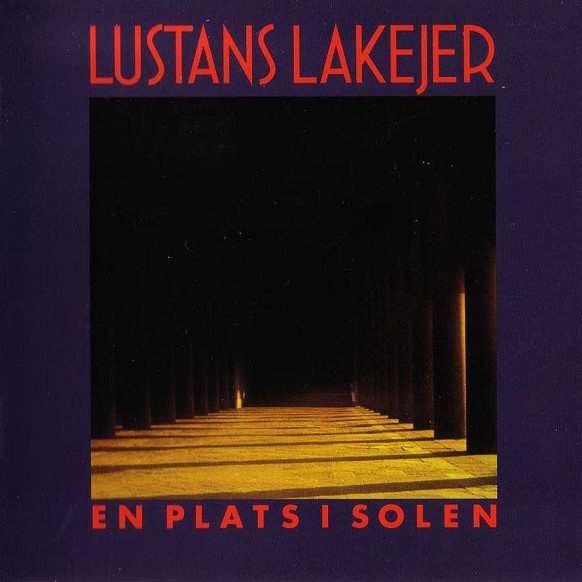
You are performing ‘En Plats I Solen’ on tour this Autumn?
Yes, that’s the plan. No dates or venues are fixed yet, but the idea is to start the tour mid-October / early November, more or less exactly 35 years since the release of the album.
Why do you see this as the LUSTANS LAKEJAR album, the one that fans and critics have the most affection for?
Well, the critics’ choice is actually usually our first album. ‘En Plats I Solen’ is our third and the fans are pretty much split between one of the three first albums. Some, quite rightly, are also very fond of our two comeback albums ‘Åkersberga’ (1999) and ‘Elixir’ (2011).
I believe, however, that those who prefer ‘En Plats I Solen’ very much do so because of the atmosphere and the sound; it was a rather big step forward compared to the two previous albums. Of course, it also has some stellar songs.
How did Richard Barbieri come to be involved in ‘En Plats I Solen’? What was the thinking behind him being the producer?
It was actually Klas Lunding, the head of our record company Stranded Rekords, who got in touch with Richard first. I actually still don’t know how that came about. Richard was played ‘Diamanter’, the 1982 version that we had just finished; he became interested and came to Stockholm in the spring of 1982 to meet us. We all got along swimmingly and the project was given the go-ahead. The thinking behind it was of course to give the upcoming album a better sound, one that could perhaps even work on the international stage.
Although LUSTANS LAKEJER used synths on their first two albums, was the more dynamic electronic reworking of ‘Diamanter’ the seed to the new approach on ‘En Plats I Solen’?
That’s an interesting question, and in some sense that is correct. But that single was arranged, recorded and mixed before we had any contact with Richard and therefore is rather one of a kind in our repertoire. I do wish we would have revisited that hard synth-disco-oriented sound a few more times, if not on ‘En Plats I Solen’, then shortly afterwards.
As can be heard on ‘En Främlings Ögon’ (‘Eyes Of A Stranger’) and ‘Drömmar Dör Först’ (‘Something’s Got To Give’) , JAPAN were a key influence on this album, but what other artists were you listening to at the time?
Well, I don’t think ‘Drömmar Dör Först’ (‘Something’s Got To Give’) sounds very much like JAPAN at all, that one is more an example of another influence at the time, TALKING HEADS and especially their forays into funk and black music. We were very much into the rhythmic aspect of the music.
Then there’s all sorts of influences, from chanson (or at least CHARLES AZNAVOUR) to the more obvious like early ROXY MUSIC and Berlin-era DAVID BOWIE.
With the synthesizer textures prevalent on the album, how were these being procured? Was Richard Barbieri more involved in the programming, while Janis Bokalders did the actual playing?
Yes, that is basically the way it happened. However, Janis had just bought a Roland Jupiter 8 and he was also very good at programming, and since Richard hadn’t used that particular machine before, he worked mainly on the Prophet 5. But there were of course also a lot of cross-creativity, when Richard helped program the Jupiter 8 and Janis the Prophet 5; it was all very collaborative and non-prestigious.
I believe Richard even played some parts, but I can’t remember which or indeed if he actually did anymore. The vast majority of the keyboards were definitely played by Janis, but Richard had a huge part in the soundscaping. We also rented an Emulator, which they both experimented with. Lastly, Janis actually owned a EMS VCS3 which he used on some tracks without the keyboard, something he also does on the solo on ‘Diamanter.’
‘Den Glöd Som Aldrig Dör’ (‘Whispers In the Dark’) contained one of the first uses of an Emulator on a pop record; was utilising the state of the art technology an important aspect in the band’s direction?
The Emulator features prominently on both ‘Den Glöd Som Aldrig Dör’ (‘Whispers In The Dark’) and – perhaps even more – on ‘Något Måste Brista’ (‘In Spite Of It All’). And yes, we did like to experiment with new technology, but not for the sake of it, we always wanted to get something creatively interesting out of the new instruments. In the case of the Emulator, I think we only partly managed to do that.
What was it like to have the late Mick Karn contributing sax to three of the tracks on ‘En Plats I Solen’?
Absolutely fantastic. Mick flew in from LA so he had a great tan, a crisp suit and just looked like a pop star – or perhaps rather a movie star – in every possible way. He was so kind and helpful and came up with some great ideas and performances for the saxophone parts. He was also very entertaining and told some lovely stories from his youth. Even though he was only in Stockholm for about a weekend, I remember those few days with much joy. I was very sad to hear of his illness and subsequent passing.
Which tracks on ‘En Plats I Solen’ were the favourite ones for you and why?
I would count these as my favourites: ‘En Kyss För Varje Tår’ (‘A Kiss For Every Tear’), ‘En Främlings Ögon’ (‘Eyes Of A Stranger’), ‘Läppar Tiger, Ögon Talar’ (‘Lips Are Silent’) and ‘Drömmar Dör Först’ (‘Something’s Got To Give’), together with ‘Vackra Djur’ (‘Just As Wild’).
Some of them because I like the songwriting aspect of them, I think they are melodically and harmonically good compositions, others because of the arrangements and how the band actually sound when playing them. I also think Janis’ instrumental title track, ‘En Plats I Solen’ (‘A place In The Sun’) is a wonderful piece of music.
The album was later released in English as ‘A Place In The Sun’ and the band changed their name to VANITY FAIR, had this always been part of the game plan?
The English version was actually recorded first, in the summer of 1982 when Richard was in Stockholm. The lyrics for the Swedish version were recorded in separate sessions in the early fall of ‘82. So in a way we did have a game plan, in the sense that we wanted the album to be released internationally. The name VANITY FAIR, however, was something we came up with at the last moment before the actual release. We weren’t that happy with the name then and I’m not that happy with it now… 😉
The verbatim translation of LUSTANS LAKEJER is ‘The Lackeys of Lust’ or maybe ‘The Slaves of Lust’, but this didn’t sound right in English so we never really got it right. Unfortunately THE LOUNGE LIZARDS was already taken by another band… 😉
How did you find writing lyrics in English for ‘A Place In The Sun’? Did your approach to subjects change and did you eventually find yourself starting to dream in English?
No, the subject matter was similar to the first two albums. Perhaps this one is even more centred around love and particularly the loss of it, but that had more to do with private circumstances than a change in language. I usually start a new lyric with a title that inspires me and working in a new language, I found this approach even more stimulating. With a new language, there was a fresh feeling about a lot of the title and lyric ideas.
About the dreams – it’s quite some time ago, but I’ve written quite a few songs in English since then and I’m quite certain that I rarely or never dream in English. However, because I read so much English, even news, and watch so many Anglo-American TV series and movies, I do sometimes have a hard time to find the correct Swedish synonym for certain words. Several English alternatives are popping up in my head, but the right Swedish one seems to elude me. Very annoying…
Of course, the music industry was different back then. But do you think in hindsight it might have been better to keep the LUSTANS LAKEJER name for ‘A Place In The Sun’ to utilise the press momentum that had been gained from Richard Barbieri being the producer?
Well, we kept the name in Sweden and all the Scandinavian /Nordic countries. As I explained earlier, we all (including several record companies) believed that LUSTANS LAKEJER would be to strange a band name for the international market. It does not make any sense if you don’t understand the meaning of the words.
Two of the original Richard Barbieri produced tracks were dropped for the VANITY FAIR version of the album and the running order was altered, why was this?
We recorded a single version of ‘Lips Are Silent’ (‘Läppar Tiger, Ögon Talar’) which we at that time felt very happy with, and decided to put it on the English album. However, when we play the song live nowadays, we play the original version.
The reason to swap ‘Could You Be The One’ (Räddaren I Nöden’) for ‘The Texture of Her Skin’ (the B-side of ‘En Främlings Ögon’, no Swedish version of this song exists…) was that we felt that it would make the album a bit more energetic. This was also the reasoning behind the altered running order – instead of having the two tracks that became singles as song number 1 and 2 on Side 1, we let them open each side of the album. So it was really more a case of trying to find a better balance for the album, than anything else.
LUSTANS LAKEJER have had a fluid line-up with you as the constant over the years, what would you say are the advantages and disadvantages?
Well, the advantage is that I have had the opportunities to work with different musicians during the years, but that can also be a disadvantage. It’s easy to make good-sounding but less interesting albums when you can bring anybody in to play on them. Looking back, I wish I never disbanded the group after ‘A Place In The Sun’. We had something special together and could have gone on making extraordinary music, at least through the 80s.
What inspired your return as LUSTANS LAKEJER for 1999’s ‘Åkersberga’ album?
The two LUSTANS LAKEJER albums after ‘A Place In The Sun’ and my first two solo albums ‘Johan Kinde’ (1989) and ‘Valona’ (1990) had some great songs, really nice compositions, but lacked the originality of the first three albums. I wanted to get back to that mood, that style, without compromising the quality of the songs. And I think the producer Jan Lundkvist (who basically plays all the instruments) and I managed to do that very well, with of course some participation from Tom Wolgers, who played keyboards on the second LUSTANS LAKEJER album ‘Uppdrag I Genève’.
‘Cynisk’ is a moody triumph. How had your headspace changed musically by this time?
Thank you, it’s one of my own favourites from the album. Musically, I think it’s inspired by very disparate artists, as varied as BARRY WHITE – the chord structure has a lot of minor 9s in the verses –– and DEPECHE MODE with the bass synth arrangement in the chorus.
While DEPECHE MODE might be a rather obvious influence, Barry White is an example of how my musical tastes had expanded by that time and how I now could use these more complex tastes to influence me, but not overwhelm me. I mean, I’m not trying to sound like Barry White, I just liked that chords and made something quite different out of it.
With ‘Allt Vi En Gång Trodde På’, LUSTANS LAKEJER entered Melodifestivalen in 2007 which is Sweden’s national selection procedure for the Eurovision Song Contest. How did you find the experience?
Well, it was an interesting experience, even though perhaps not gratifying in the end. Looking back I feel we should’ve had a more synth-driven song, or at least done the song in a crisper, more synth-driven arrangement.
In Scandinavia, they take this event more seriously than in the United Kingdom and for example, an act like RAIN TREE CROW or THE DOLPHIN BROTHERS would never enter it. What are your thoughts on this?
I think it used to boils down to the fact that ABBA made their breakthrough in Eurovision in 1974. That was basically the first Swedish act ever to make it big (or at least that big) on the international stage.
In England, it was never that important, you were almost automatically an international star if you became popular domestically.
And even if it would have been a big thing in the UK, I don’t think those kind of artists like RAIN TREE CROW or THE DOLPHIN BROTHERS would fit the bill. Now, PET SHOP BOYS, THE HUMAN LEAGUE or DURAN DURAN – that’s another matter, they could’ve done it! 😉
The most recent LUSTANS LAKEJAR album was ‘Elixir’ in 2011, how do you find the music industry today with Spotify and social media? How has it worked for you as a veteran artist compared with the past?
No matter if you’re a veteran artist or a newcomer, it’s much much harder to get paid for recorded music today. That being said, I hope that one day soon Spotify and other streaming services will be able to pay a fair royalty to artists and composers because it’s far better than illegal downloading, and I think there’s no turning back to physical copies. I say this somewhat sadly, of course, because I love good album covers…
What’s next for you as LUSTANS LAKEJER after touring ‘En Plats I Solen’?
Well, we’re still touring with ‘Uppdrag I Genève’ and are still working on the venues and exact line-up of the band for the ‘En Plats I Solen’ tour in the Autumn / Winter of 2017, so that will possibly take us into 2018. I hope to get back to you with some exciting news about that soon!
I do have some new songs that I’ve been thinking about recording with the band, but this is just an idea at this point.
ELECTRICITYCLUB.CO.UK gives its warmest thanks to Johan Kinde
Special thanks also to John Linqwister
‘Uppdrag I Genève’, ‘En Plats I Solen’
and ‘A Place In The Sun’
are available as download albums via Universal Music
LUSTANS LAKEJER perform ‘Uppdrag I Genève’ live at Ystad Öja Krog on 14th April, Uppsala Katalin on 26th May and Gothenburg Liseberg on 13th July
Upcoming information on the ‘En Plats I Solen’ tour dates will be posted at https://www.facebook.com/LustansLakejer/
https://www.instagram.com/lustanslakejerofficial/
Text and Interview by Chi Ming Lai
Photos courtesy of Johan Kinde
25th March 2017

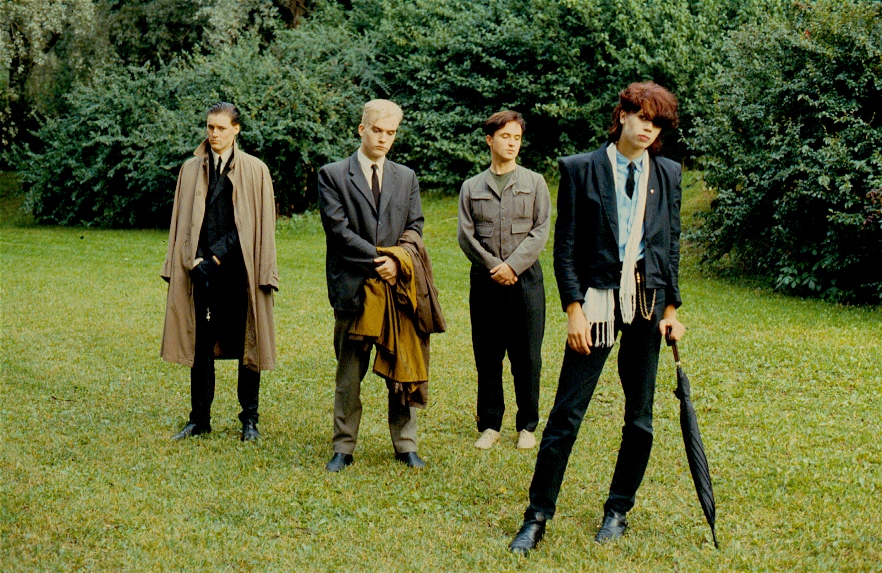
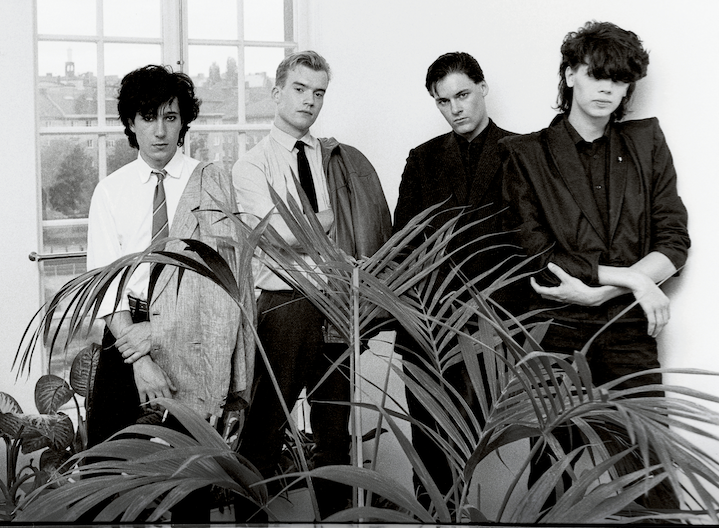
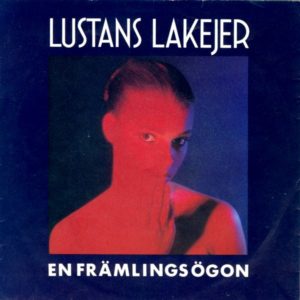
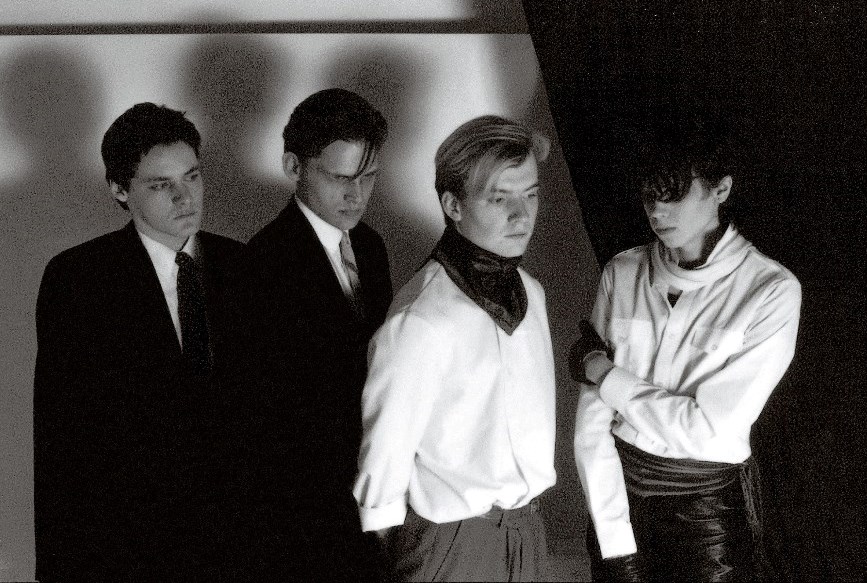
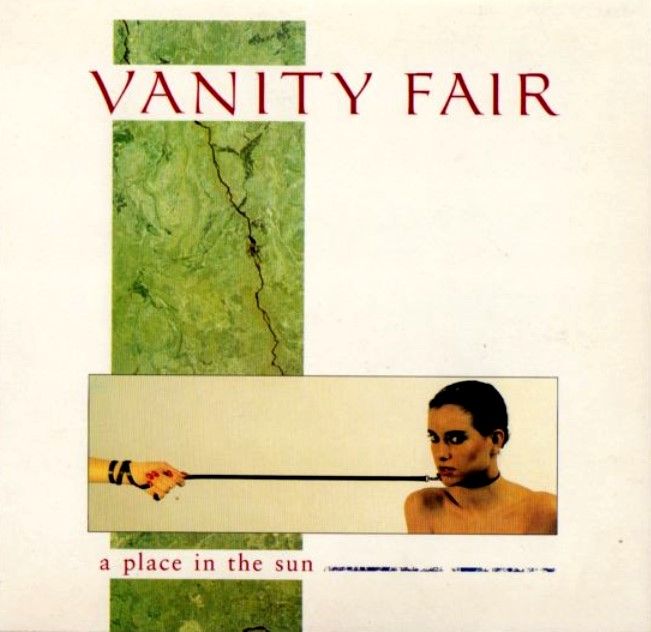
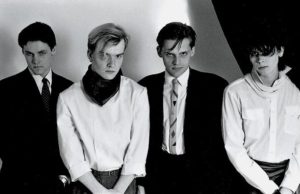
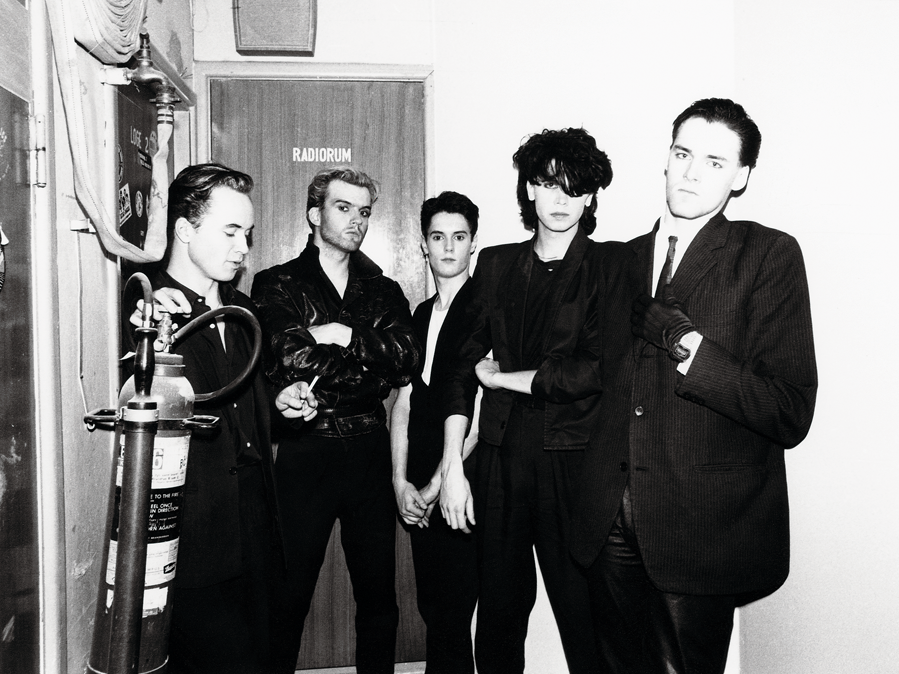
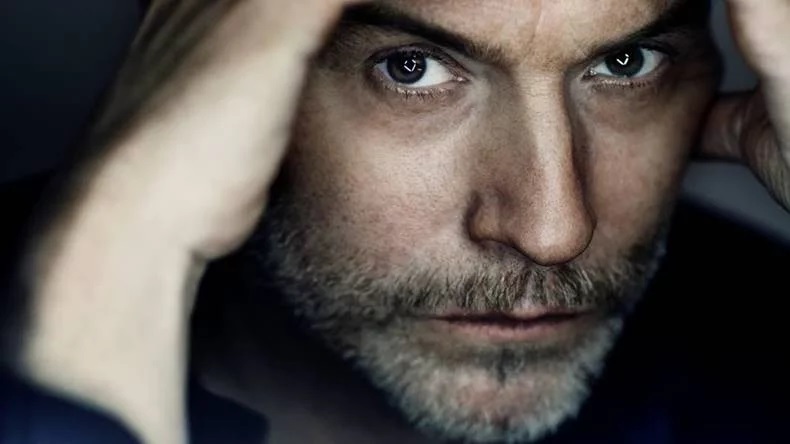
Follow Us!